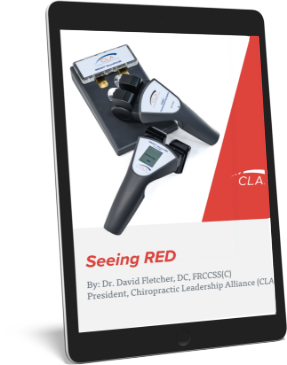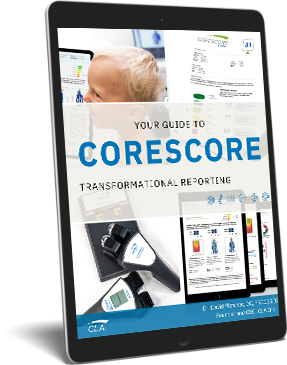The discoverer of chiropractic, D.D. Palmer, wrote extensively about the concept of tone. According to Palmer: “Life is the expression of tone. In that sentence is the basic principle of Chiropractic. Tone is the normal degree of nerve tension. Tone is expressed in functions by the normal elasticity, activity, strength and excitability of the various organs, as observed in a state of health. Consequently, the cause of disease is any variation of tone — nerves too tense or too slack.” (1)
Palmer’s tonal model is inherent in the modern concept of “tensegrity.” Tensegrity is maintained in “a system that stabilizes itself mechanically because of the way tensional and compressive forces are distributed and balanced within the structure.” (2) In living cells, tensegrity is maintained by contractile microfilaments which form a lattice that reorganizes locally into different forms.
The biological implications of tensegrity are described by a medical physician, Ingber: “Remarkably, tensegrity may even explain how all (these) phenomena are so perfectly coordinated in a living creature. At the Johns Hopkins School of Medicine, Donald S. Coffey and Kenneth J. Pienta found that tensegrity structures function as coupled harmonic oscillators. DNA, nuclei, cytoskeletal filaments, membrane ion channels and entire living cells and tissues exhibit characteristic resonant frequencies of vibration. Very simply, transmission of tension through a tensegrity array means to distribute forces to all interconnected elements and, at the same time, to couple, or ‘tune,’ the whole system mechanically as one.” (2) Tensegrity is not limited to the cellular level, but is operative on all anatomical levels.
Tone and tensegrity are elegant theoretical models with practical clinical implications. D.D. Palmer wrote: “Tone, in biology, is the normal tension or firmness of nerves, muscles or organs, the renitent, elastic force acting against an impulse. Any deviation from normal tone, that of being too tense or too slack, causes a condition of renitence, too much elastic force, too great resistance, a condition expressed in function as disease.” (3)
Functional consequences of changes in tone have been described. John H. Craven, professor of philosophy at the Palmer School of Chiropractic, wrote: “We have seen that the normal air pressure at sea level is fifteen pounds to the square inch. In order that the body will not be crushed by this weight it is necessary to have an internal resistance to equal this weight. This internal resistance is maintained in the body by the tone of all of its parts; it is maintained by the expression of mental impulses in the tissue cells.” (4)
In 1927, chiropractor Stephenson noted that cord tension and cord pressure may cause impingement upon the spinal cord. (5) Nearly four decades later, neurosurgeon Breig described how adverse mechanical tension on the spinal cord may result in abnormal neurological function and the development of pathology. (6,7,8)
Wall et al reported the results of experimental stretch neuropathy in an animal model. At only 6% strain, the amplitude of the action potential had decreased by 70% at one hour and returned to normal during the recovery period. However, at 12% strain, conduction was completely blocked by one hour, and showed minimal recovery. (9)
Health is dependent upon maintaining proper tone in the nervous system. As D.D. Palmer explained: “Life is action governed by intelligence. Intelligent life, the soul, depends upon the execution of functions. Functions performed by normal energy is health. Disease is the result of the performance of functions above or below a normal degree of activity. Impulses properly transmitted through nerves, result in functions being normally performed, a condition which results in health.” (10)
Recently, Lee described the theoretical role of the central nervous system (CNS) in all disease processes in the journal Medical Hypotheses: “Every malfunction in the periphery (in contrast to the CNS) must be sensed by the CNS in order that corrective measures be taken…the CNS is universally involved in all diseases, regardless of whether they originally arise from the periphery or are indigenous to the central nervous system; whether initiated by various infective agents, be it viral, bacterial, rickettsial or parasitical in nature or resulted from exposures to toxins, radiation, physical injuries, or emotional upheavals.” (11)
The ability to maintain tone requires a nervous system free of interference. Restoration of tone is dependent upon correction of vertebral subluxations. Alterations in the tone of the somatic system may be objectively evaluated using surface EMG. Altered autonomic tone may be evaluated using skin temperature measurements. Such objective assessments have the potential to make chiropractic the dominant strategy of 21st century health care, as modern research vindicates the discoverer’s vision.
References
1. Palmer DD: “Text-book of the Science, Art and Philosophy of Chiropractic for Students and Practitioners.” Portland Printing House Company. Portland, OR. 1910. Page 7.
2. Ingber DE: “The architecture of life.” Scientific American (January 1998) Vol 278 No 1 Pages 48-57.
3. Palmer 1910. Page 659.
4. Craven JH: “A Text-book on Hygiene and Pediatrics From A Chiropractic Standpoint.” Hammond Press. WB Conkey Company. Chicago, IL. 1924. Page 54.
5. Stephenson RW: “Chiropractic Textbook.” Palmer School of Chiropractic. Davenport, IA. 1927. Page 306.
6. Breig A: “The biomechanics of the spinal cord and its membranes in the spinal canal.” Verh Anat Ges (German) 1965,115:49-69.
7. Breig A, Turnbull I, Hassler O: “Effects of mechanical stresses on the spinal in cervical spondylosis. A study on fresh cadaver material.” J Neurosurg 1966 Jul, 25(1):45-56.
8. Breig A: “Overstretching of and circumscribed pathological tension in the spinal cord — a basic cause of symptoms in cord disorders.” J Biomech 1970 Jan, 3(1):7-9.
9. Wall EJ, Massie JB, Kwan MK, Rydevik BL, Myers RR, Garfin SR: “Experimental stretch neuropathy. Changes in nerve conduction tension.” J Bone Joint Surg (Br) 1992, 74(1):126-129.
10. Palmer 1910. Page 661.
11. Lee TN: “Thalamic neuron theory: theoretical basis for the role played by the central nervous system (CNS) in the causes and cures of all diseases.” Medical Hypotheses 1994, 43:285-302.























































